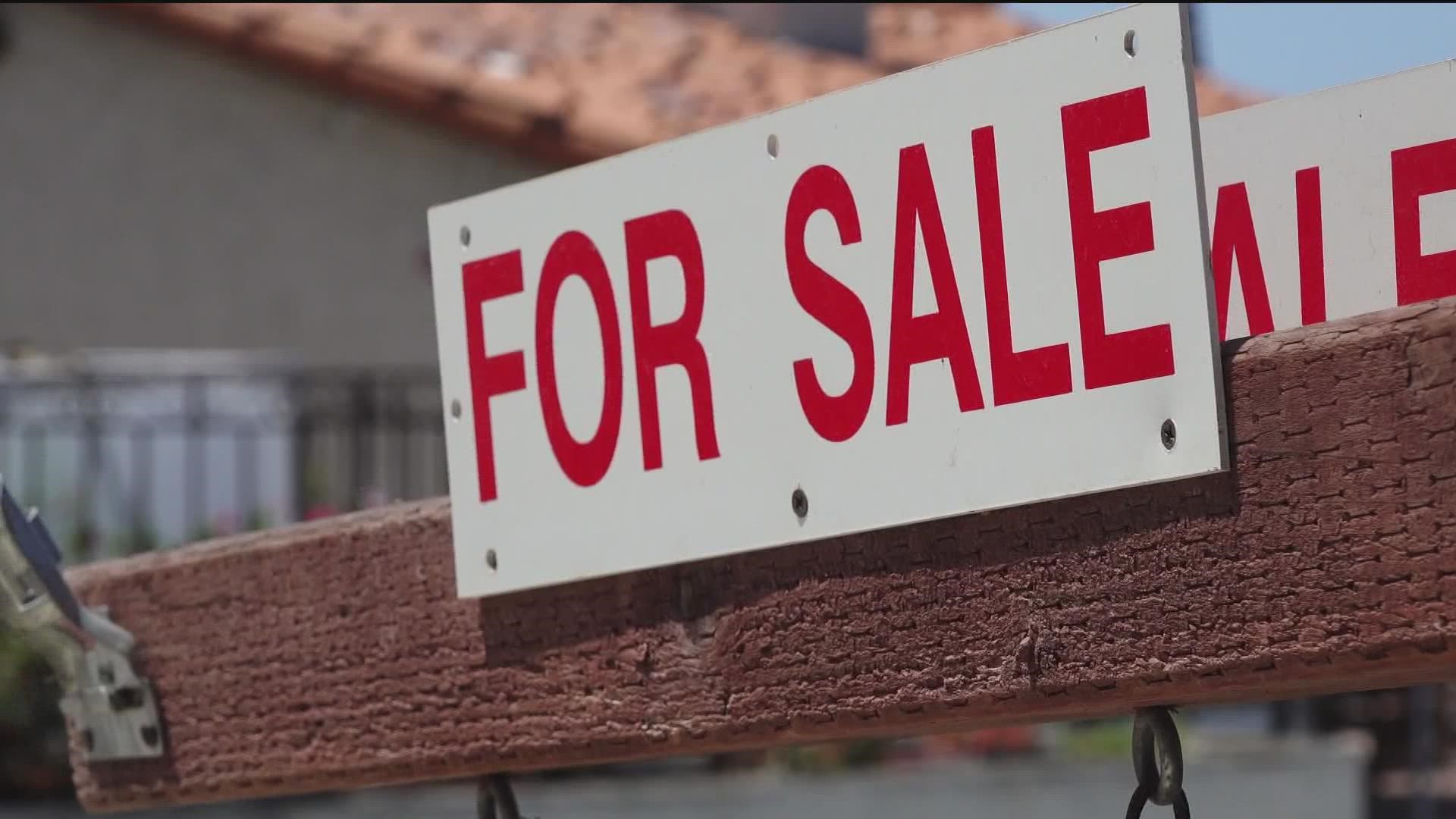SAN DIEGO COUNTY, Calif. — San Diego home prices are dropping and we're seeing a record slowdown nationwide.
According to the S&P Case-Shiller Indices, the home prices were down 2.5% from July to August. San Diego County hasn’t seen a drop that significant since July 2008.
According to Realtor.com, in August the median sale price for a single-family home was $900,000. During the pandemic, the median sale price for a single-family home was around $670,000. The annual price growth for San Diego is 12.7% and 13% nationwide, according to S&P Case-Shiller Indices.
Average long-term U.S. mortgage rates inched up this week ahead of another expected rate increase by the Federal Reserve when it meets early next month, according to the Associate Press.
Mortgage buyer Freddie Mac reported last week that the average on the key 30-year rate ticked up this week to 6.94% from 6.92% last week. Last year at this time, the rate was 3.09%.
The average rate on 15-year, fixed-rate mortgages, popular among those looking to refinance their homes, jumped to 6.23% from 6.09% last week. Last week it climbed over 6% for the first time since the housing market crash of 2008. One year ago, the 15-year rate was 2.33%.
The Fed’s aggressive action has stalled a housing sector that — outside of the onset of the pandemic — has been hot for years.
The National Association of Realtors said that sales of previously occupied U.S. homes fell in September for the eighth month in a row as house hunters faced sharply higher mortgage rates, bloated home prices and a tight supply of properties on the market.
Sales fell 23.8% from September last year, and are now at the slowest annual pace since September 2012, excluding the steep slowdown in sales that occurred in May 2020 near the start of the pandemic.
Freddie Mac says that for a typical mortgage, borrowers who locked in at the higher end of the rate range during the past year would pay several hundred dollars more than borrowers who signed contracts at the lower end of the range.
Late in September, the Federal Reserve bumped its benchmark borrowing rate by another three-quarters of a point in an effort to constrain the economy and tame inflation. It was the Fed's fifth increase this year and third consecutive 0.75 percentage point increase. The Fed's next two-day policy meeting opens Nov. 1, with most economists expecting another big three-quarters of a point hike.
Despite the Fed's swift and heavy rate increases, inflation has hardly budged from 40-year highs and the labor market remains tight.
Earlier this month, the government reported that America’s employers slowed their hiring in September but still added 263,000 jobs. The unemployment rate fell to 3.5%, matching a half-century low.
Another report from the government last week showed that consumer inflation remained much too high at 8.2%. Combined with the 8.5% inflation at the wholesale level, most economists expect another big increase when the Fed meets in early November.
By raising borrowing rates, the Fed makes it costlier to take out a mortgage and an auto or business loan. Consumers and businesses then presumably borrow and spend less, cooling the economy and slowing inflation.
Mortgage rates don’t necessarily mirror the Fed’s rate increases, but tend to track the yield on the 10-year Treasury note. That’s influenced by a variety of factors, including investors’ expectations for future inflation and global demand for U.S. Treasurys.
Despite a still-robust job market, the government estimates that the U.S. economy shrank at a 0.6% annual rate in the second quarter that ended in June, the second straight quarterly contraction.
At CBS 8, we are always Working for You and our San Diego community. If there is something you would like us to investigate, please share your idea here or email us at workingforyou@cbs8.com.
WATCH RELATED: The San Diego real estate market is shifting, how do home prices compare to last year? (September 2022)

